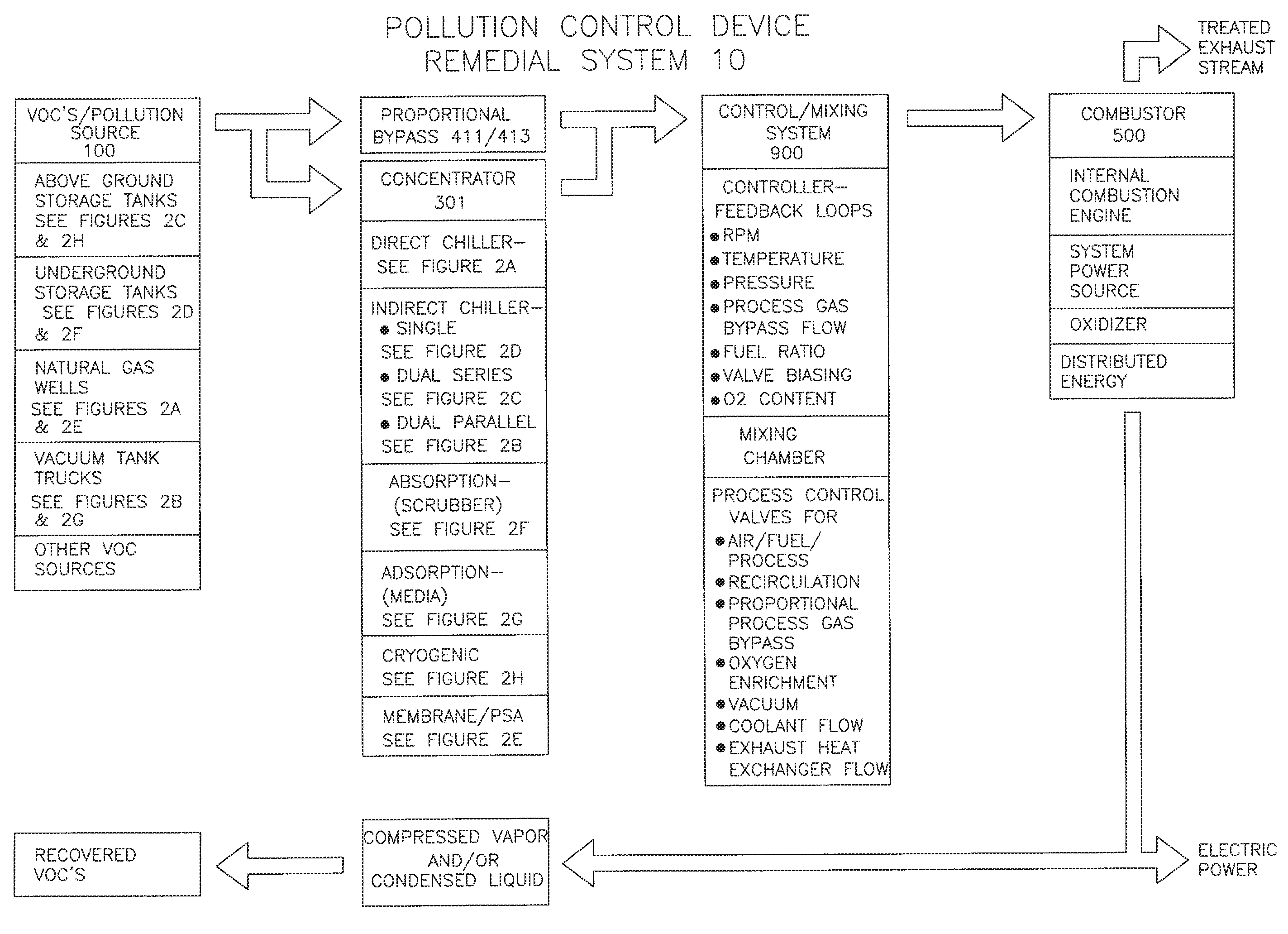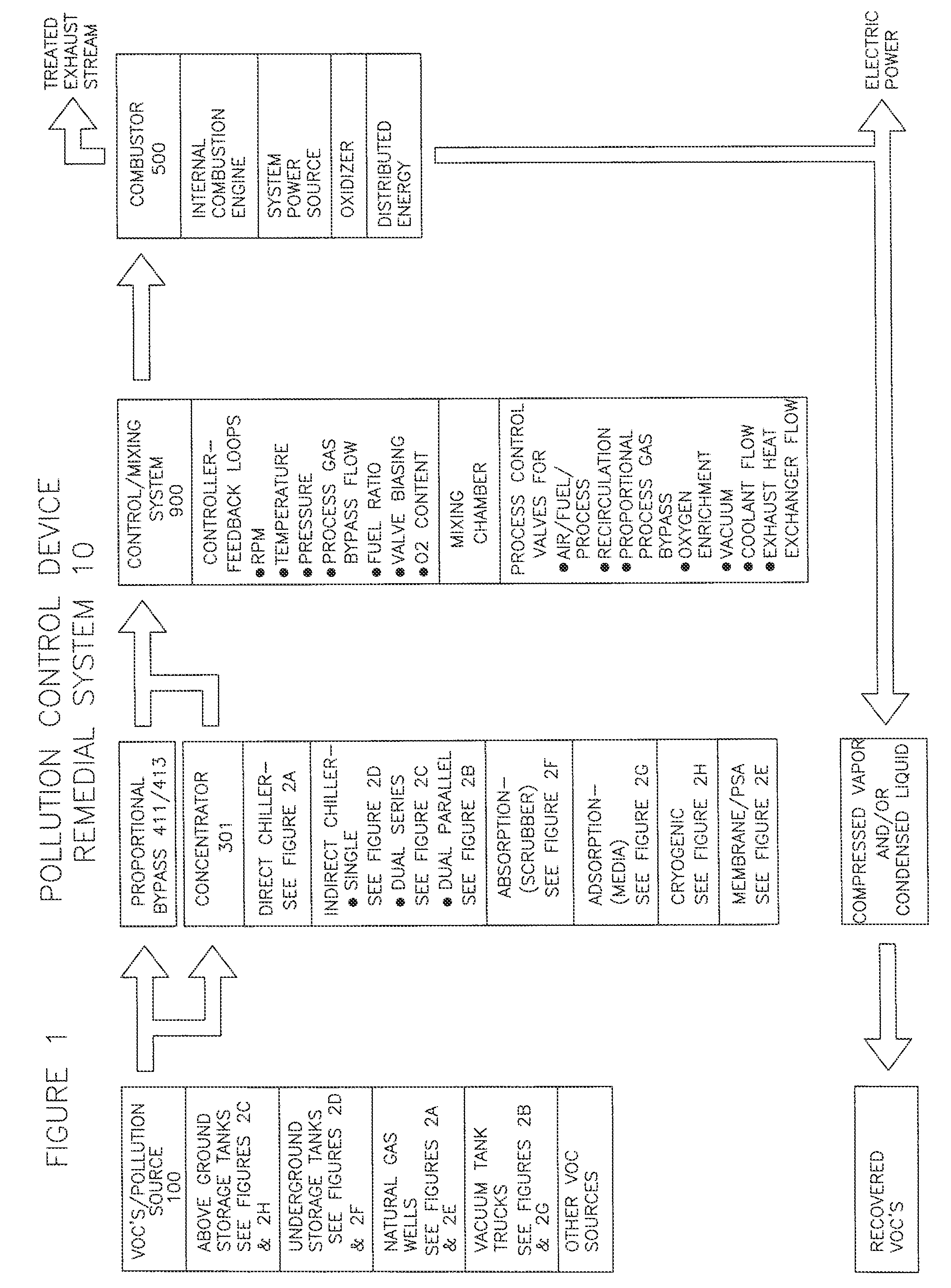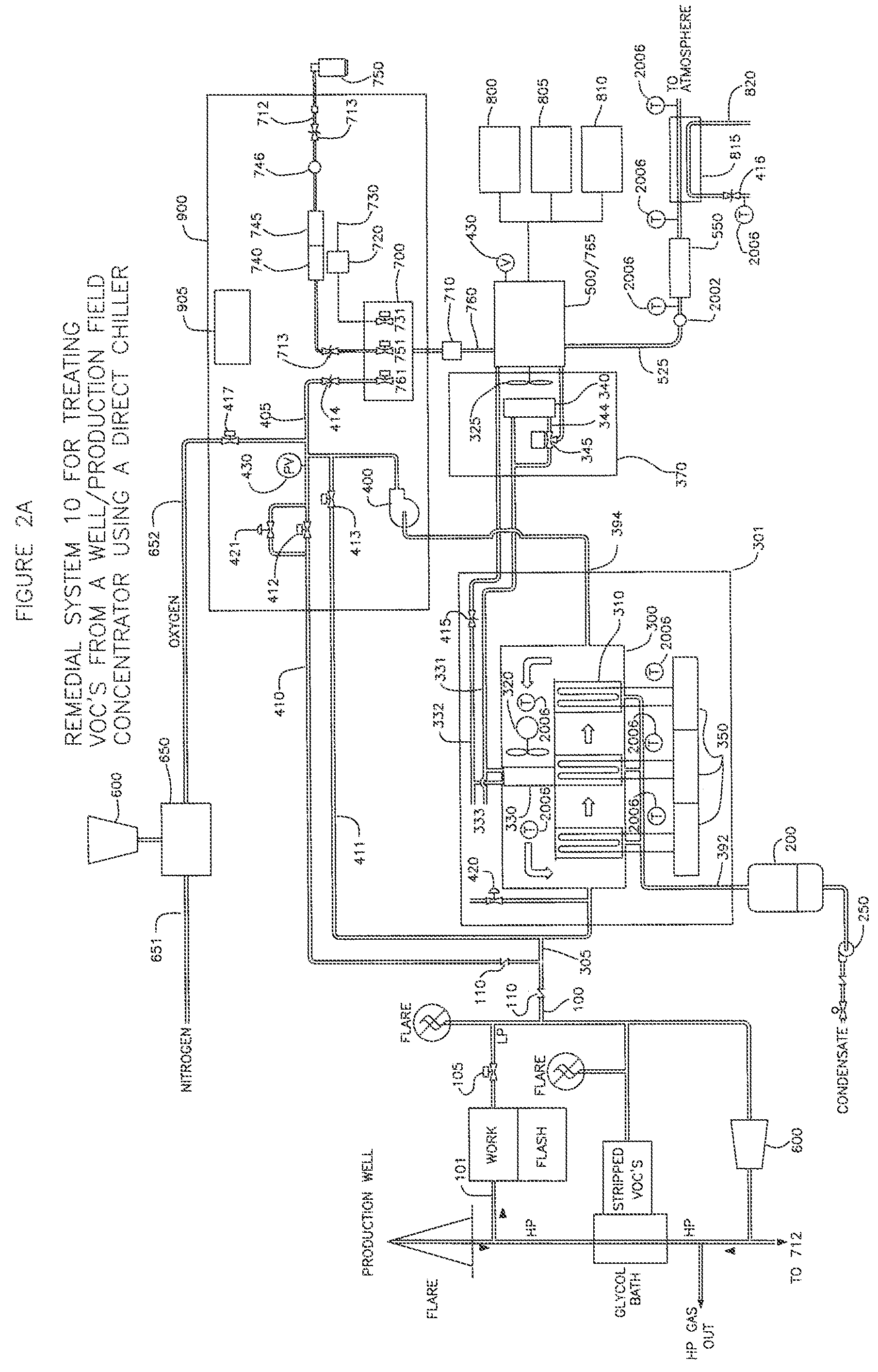Remedial system: a pollution control device for utilizing and abating volatile organic compounds
a pollution control device and volatile organic compound technology, applied in the direction of gaseous fuels, machines/engines, separation processes, etc., can solve the problems of unsafe operation, environmental damage or health problems, and present form of oxidizers that are too polluting, etc., to achieve safe use, treatment and/or disposal of vocs
- Summary
- Abstract
- Description
- Claims
- Application Information
AI Technical Summary
Benefits of technology
Problems solved by technology
Method used
Image
Examples
example 1
[0144]Remedial system 10 can be used in any number of various applications where there is a source of organic volatiles, VOCs. For example, it has been found that process gas that is routed to a flare for oxidation can instead be treated with remedial system 10 of the present invention and electricity generated as a byproduct of the inventions' oxidation process. In one exemplary embodiment, about 20% of a 60 SOW process gas stream going to a flare for oxidation is diverted to the remedial system. The diverted process gas stream is hooked up directly to an ICE 500. Control mixing system 900 and air fuel controller 905 on the ICE 500 creates a mix of about 99% of the process gas and 1% of propane alternate fuel to form a mixed fuel for combustion by the ICE 500. In the exemplary embodiment, the ICE 500 then is used to run a generator which produces between 25 to 40 kW of usable electricity for the site. In another embodiment, no gas will be directed to flare in favor of the invention...
example 2
[0145]In another exemplary embodiment, a process gas stream is directed to the condenser unit of the present invention. The condenser unit removes about 10 to 20% of the VOCs and SVOCs in the process gas stream at the initial stage of operation of the remedial system. At the steady state condition of remedial system 10, the condenser removes about 20% to 90% of the VOCs (depending on VOC type) in the process gas stream before it reaches the ICE 500. The net result, following oxidation by the ICE 500, is over 99.9% removal of VOCs in the process gas stream. In this exemplary embodiment, the ICE 500 is a single engine rated at less than 50 brake horsepower (BHP). Although an ICE with a larger engine or multiple engines can be used, it may not be necessary since the condenser unit removes most of the volatile contents from the process gas stream.
[0146]In view of the foregoing, an embodiment of the present invention provides a remedial system that has a concentrator adapted to remove a ...
PUM
| Property | Measurement | Unit |
|---|---|---|
| Power | aaaaa | aaaaa |
| Volatility | aaaaa | aaaaa |
Abstract
Description
Claims
Application Information
 Login to View More
Login to View More - R&D
- Intellectual Property
- Life Sciences
- Materials
- Tech Scout
- Unparalleled Data Quality
- Higher Quality Content
- 60% Fewer Hallucinations
Browse by: Latest US Patents, China's latest patents, Technical Efficacy Thesaurus, Application Domain, Technology Topic, Popular Technical Reports.
© 2025 PatSnap. All rights reserved.Legal|Privacy policy|Modern Slavery Act Transparency Statement|Sitemap|About US| Contact US: help@patsnap.com



